Bulk Pricing
USB 3.2 Gen 1 Mini 7 Port Hub Component w/ ESD Surge Protection – PCBA
Industrial Grade | +5V DC Input | Surge Protection | 5 Gbps
- Protect Your Equipment: The 7-port hub features 15kV ESD surge protection to keep your connected peripherals safe from harm.
- Super Fast Speeds: This USB hub is 3.2 Gen 1 compliant, ensuring super-fast 5Gbps data transfer speeds. It supports super speed, high speed and full speed which enables it to be compatible with USB 2.0 / 1.1.
- Upstream: 1 USB port, Type B connector
- Downstream: 7 USB ports, Type A connectors
- Power Connector: DC Barrel 2.5mm ID × 5.5mm OD, Center Pin Positive
Description
7-Port USB 3.2 Gen 1 Hub PCBA
USB 3.2 Gen 1 USB hub board with ESD and surge protection. The Coolgear CG-2x3510S7-BOARD is a 5V DC input (self or bus powered), USB 3.2 Gen 1 hub circuit board for incorporating into equipment, assemblies, or a custom enclosure. It will support fast charging for Apple 1A/2.4A and Samsung Galaxy devices.
Each port is individually protected to help protect your peripheral investments. The USB 3.2 Hub component board uses a GL3510 chip. The GL3510 Hub controller chip features native fast-charging and complies with USB-IF battery charging specification rev1.2.
7-Port USB 3.2 Gen 1 Mini Hub Component Board Features
- Compliant with USB 3.2 Gen 1 Specification
- Upstream USB Type-B port supports Super-Speed (SS), High-Speed (HS) and Full-Speed (FS) traffic
- 7 USB Type-A downstream ports support Super-Speed (SS), High-Speed (HS) and Full-Speed (FS) traffic
- ESD protection per port: ±15 kV(Air), ±15 kV(Contact)
- 1 control pipe and 1 interrupt pipe
- Backward compatible to USB specification 2.0/1.1
- Compliant with Battery Charging 1.2 Specification
- Over current protection on each downstream port
Specifications:
- Hub Controller Chip: GL3510
- USB 3.2 Gen 1 Compliant
- Supports High Speed Full Speed and Super Speed transmit and Receive
- Complies with USB-IF Battery Charging revision 1.2
- Automatic switching between self-powered and bus-powered modes
- DC Barrel: 2.5mm Inner Diameter, 5.5mm Outer Diameter, Positive Polarity on Center Pin
Package Contents:
- USB 3.2 7-Port Hub Component Board
Specifications
Product Specifications
| Power |
| ||||||||||||
|---|---|---|---|---|---|---|---|---|---|---|---|---|---|
| Compliance |
| ||||||||||||
| Physical Characteristics |
| ||||||||||||
| What's in the Box |
| ||||||||||||
| Software |
| ||||||||||||
| Environmental |
| ||||||||||||
| Product Information |
| ||||||||||||
| Hardware |
| ||||||||||||
| Performance & Safety |
| ||||||||||||
| Other Data |
|
Support
Product Documentation & Drivers
Need drawings, CAD files, or other compliance documentation? Click HERE
Relevant Articles & F.A.Q.
Relevant Articles
Product F.A.Q.
View frequently asked product questions below. Still need help? Reach out!
-
Can the hub be used without a power supply?
View AnswerIn some cases, yes. USB peripherals that only require low power (i.e. keyboards & mice) can be used without a power adapter. Power in this case is drawn from the host’s USB port.
When high-power USB peripherals are used, a power supply for the USB hub may be required. In other cases, the USB peripheral may require their own power adapters, in this case, a power supply for the hub may not be required. Without ample power though, the USB hub or connected peripherals may not operate correctly. It is recommended to use an included power supply when possible.
-
After waking up from sleep mode, my computer/host no longer recognizes my USB device.
View AnswerIf the USB device does not function properly after your computer or host has been in sleep mode, it is likely that Windows turned off the USB Root hub in order to save power.
To prevent this, follow the steps below (depending on your operating system).
Windows 10 / 8
- On your keyboard, press the Windows key + X and select Control Panel.
- Click Hardware and Sound, then click Power Options.
- Click Change plan settings for the plan you want to change.
- Click Change advanced power settings.
- Click the plus sign (+) next to “USB settings” and “USB selective suspend setting” to expand the options and change the setting to Disabled.
- Click OK to apply the setting.
Note: You may need to disconnect and re-connect your USB device after applying these settings.
Windows 7 / Vista
- Click the Start button and select Control Panel.
- Click Hardware and Sound, then click Power Options.
- Click Change plan settings for the plan you want to change.
- Click Change advanced power settings.
- Click the plus sign (+) next to “USB settings” and “USB selective suspend setting” to expand the options and change the setting to Disabled.
- Click OK to apply the setting.
Note: You may need to disconnect and re-connect your USB device after applying these settings.
Windows XP
- On your desktop, right-click the My Computer icon and select Properties.
- Click the Device Manager tab.
- Expand Universal Serial Bus controllers by clicking the arrow to the left of it.
- Right-click the first USB Root Hub device and select Properties.
- Click the Power Management tab.
- Clear the box next to Allow the computer to turn off this device to save power.
- Click OK to apply the setting.
- Repeat steps 4-7 for any remaining devices in the Universal Serial Bus Controllers section with “Root Hub” in the name.
Note: You may need to disconnect and re-connect your USB device after applying these settings.
-
The hub is properly hooked up, but is not functioning correctly. What can I do?
View AnswerTesting all setup components is the best place to begin troubleshooting. To determine the source of the issue, individually test your:
- USB Cable by using it in another setup, or trying another cable.
- Host USB Port by connecting another device or thumb drive.
- Connected Peripherals by connecting directly to the host.
Moving on to troubleshooting the hub itself. Attach a USB peripheral. The USB hub itself will not appear in hardware listings on your host’s system. USB devices connected however, will appear when connected. If the connected device is still not being found, try:
- Installing the required drivers for the USB peripheral.
- Install the most recent drivers for the USB controller and/or motherboard chipset.
USB hubs do not require drivers or software.
Troubleshooting the desired USB peripheral may be in order. If the peripheral is still not being recognized, attempt:
- Attaching external power to the peripheral, if required.
- Confirming if the peripheral functions on a standard USB port.
- Testing if basic USB peripherals work, such as keyboards or mice.
-
How can external power be connected to the industrial USB hub?
External power is supplied by connecting to the terminal block located on the hub. For when an external power adapter is required check out the Accessories & Replacement Parts section on this product page. To view all of our hub accessories and power supplies, visit the category here.
How to properly choose a power supply.To determine the power requirements, the equation to use is P = 5 * I * N, where:
P is the power wattage.
5 is the USB port voltage.
I is the current of the USB port in Amps (USB 2.0 is 0.5A, USB 3.0 is 0.9A.
N is the number of USB ports.
As an example using the equation, a 4 port hub would reflect a minimum wattage of 18 watts.
Knowing the minimum requirement, a proper power adapter can be chosen. In this case the voltage of a power supply should be within 7 to 24 or 7 to 40 Volts DC, depending on the specifications of the USB hub. Also, the power supply must convert AC to DC (no AC output).
Power supplies often come with a voltage (V) rating and an amperage (A) rating. To determine the current in amps, use I = P / V, where the following is true:
I is the current of the power supply.
P is the calculated power of the hub.
V is the chosen voltage of the power supply
Continuing the example, the 4 port hub requires 18 W and the power supply you choose is 12V, the current of the power supply would be I = 18/12, I = 1.5A.
Our full collection of power adapters can be found here.




















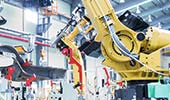














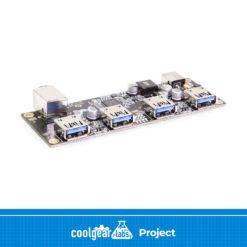

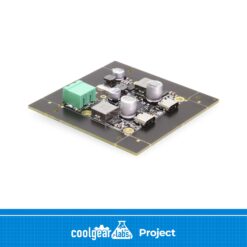




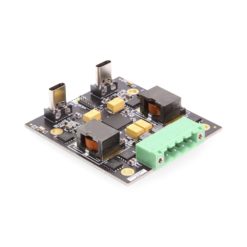



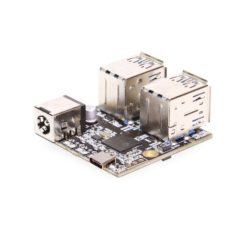




Reviews
There are no reviews yet.